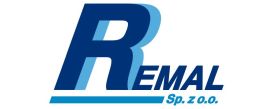The question posed in the title of this article is faced by many companies. When this choice turns out to be difficult, the burden of responding often falls on us. When would it be advisable to refurbish the machines and when would the entire line be fully upgraded? By dealing with both areas of activity, we can bring them a little closer to the reader.
What we call “modernization” in this context is simply the construction of a number of machines from scratch – but modernization also means overhauling the machines already in the plant. In each of these cases, it is all about modernizing, minimising failure and maximizing efficiency and efficiency.
Acquiring a new machine or the entire production line is often a great challenge; Not only in budgetary terms. It is also about the full technological compatibility of the cooperating devices. The maximum efficiency and efficiency of machines with minimized service and operating costs must be reconciled with each other.
There are no shortage of companies that look forward to the fact that the equipment being acquired is susceptible to the possible expansion of its functions. This far-reaching look favours Remal, offering competitive solutions based on technological innovation. Temporary and provisional is our common foes.
That’s why we almost always offer options that are not hermetically sealed for extension in terms of various functions. However, it is not uncommon that, due to financial reasons, a given machine must be completely personalized under precise demand. The company should then bear in mind that potential expansion will entail higher costs.
If we decide to extend the functional line/machine in the phase of its use, it does not have to pardon the work of the plant by disabling it from exploitation. However, this is necessary if the equipment manufacturer has not reserved this option. In this case, the large budget is absorbed not only by the renovation work, but also by the losses resulting from the “unemployment” of the machine being improved. While we do our best to prevent side effects, similar situations often show that complete rebuilding of the line is the least problematic option – despite the large amount of money being allocated for this purpose. It is, for this reason, that reconcying the existing machine with the new one, sometimes involves faults in communication. The control systems of a range of equipment may sometimes not find a “common language”.
In contrast, replacing the control system with a new one does not necessarily promote the desired accuracy or speed of the machine if the operating components are not listed. So it is quite clear that the modernisation is more comprehensively, the more powerful the risk of unwelcome complications decreases.
Of course, the machine waiting for the expansion of the function, must first undergo a scrupulous review. The process of its work in the current state must be monitored; Then it is compared with the hardware specification, which assumes the correct functioning of the device. All this minimizes future incompatibilities, but requires time resources.
Often, the age of the equipment – although it does not qualify for the museum – makes itself known by repeated malfunctions. For the same reason, the market is vain to look for spare parts, even because the drive is obsolete with the size of several generations. Is it worth the time to decide on the renovation?
Well , very often we encounter situations when the opposite happens, and it is remal employees who advise against replacing the equipment with a new one, proposing renovation. A lot depends on the professional assessment of the condition of the machine, which began to refuse obedience. It is sometimes the case that a modern control system gives you the opportunity to resurrecting the original hardware capabilities, without compromising any valuable functions.
Moreover, with the help of modern propulsion technologies, these possibilities can even be picked up. If we replace all the critical components – such as control, drive, control systems – the machine is able to regain its former capabilities with a lot of capacity. It is quite surprising how much you can refresh the equipment, which apparently seems to be already a hopeless case.
It is therefore clear from the foregoing that the choice of one of the modernisation options should be consulted by specialists. In Remal, we have a richly documented experience in the renovation of whole machines, but also partial repairs and comprehensive reconstruction of the line. This applies to the entire cross-section of industries, from metallurgy to energy, to mining and the wood industry.

